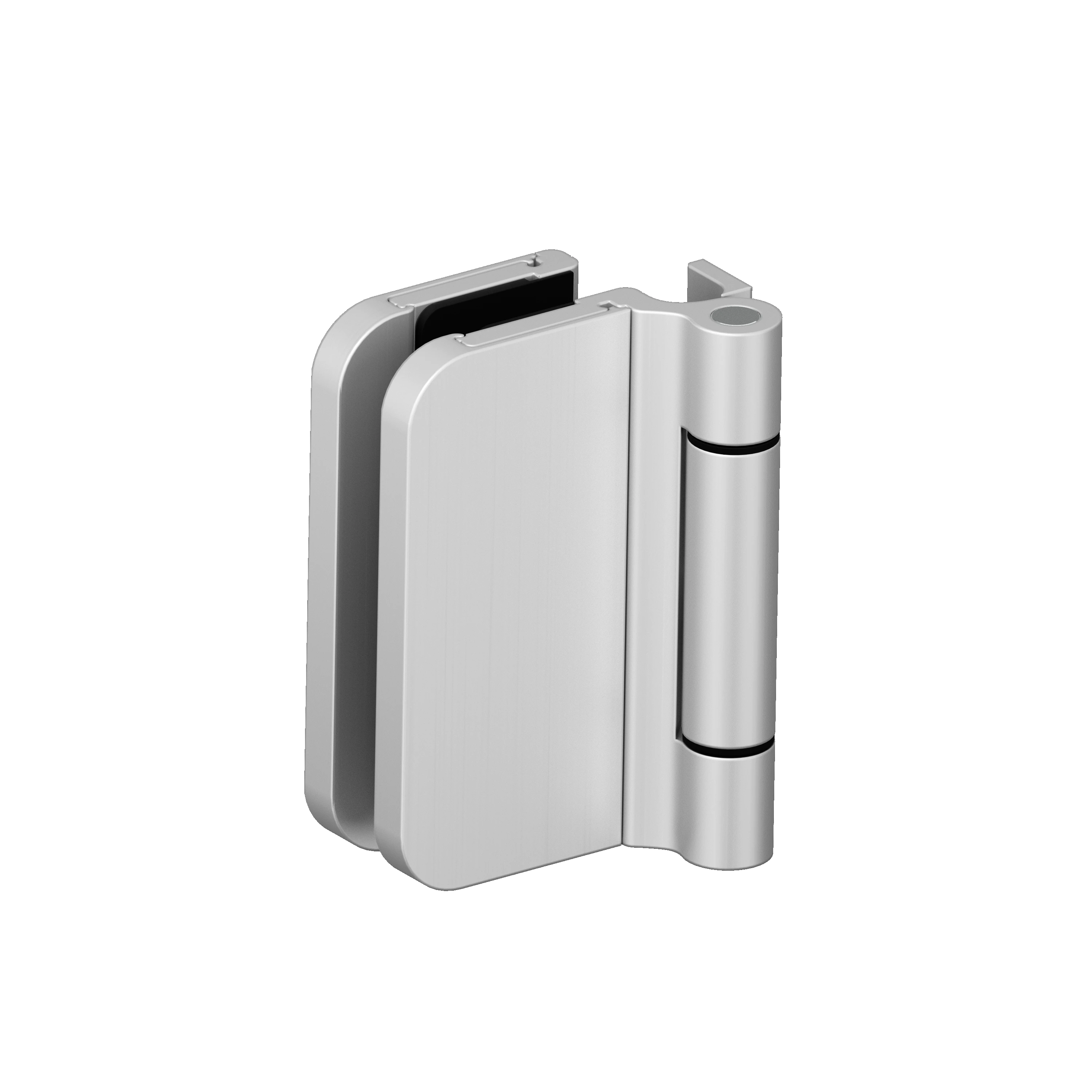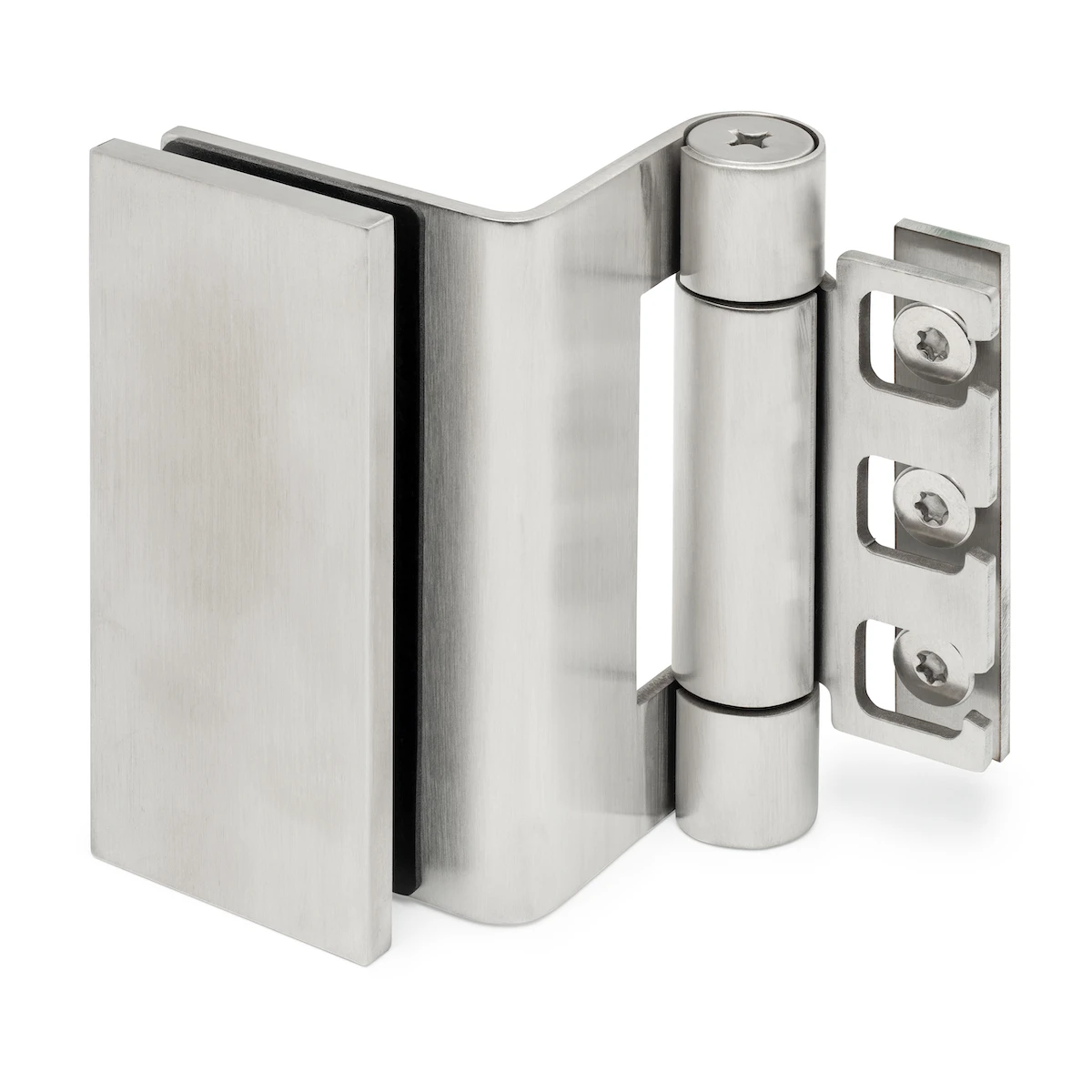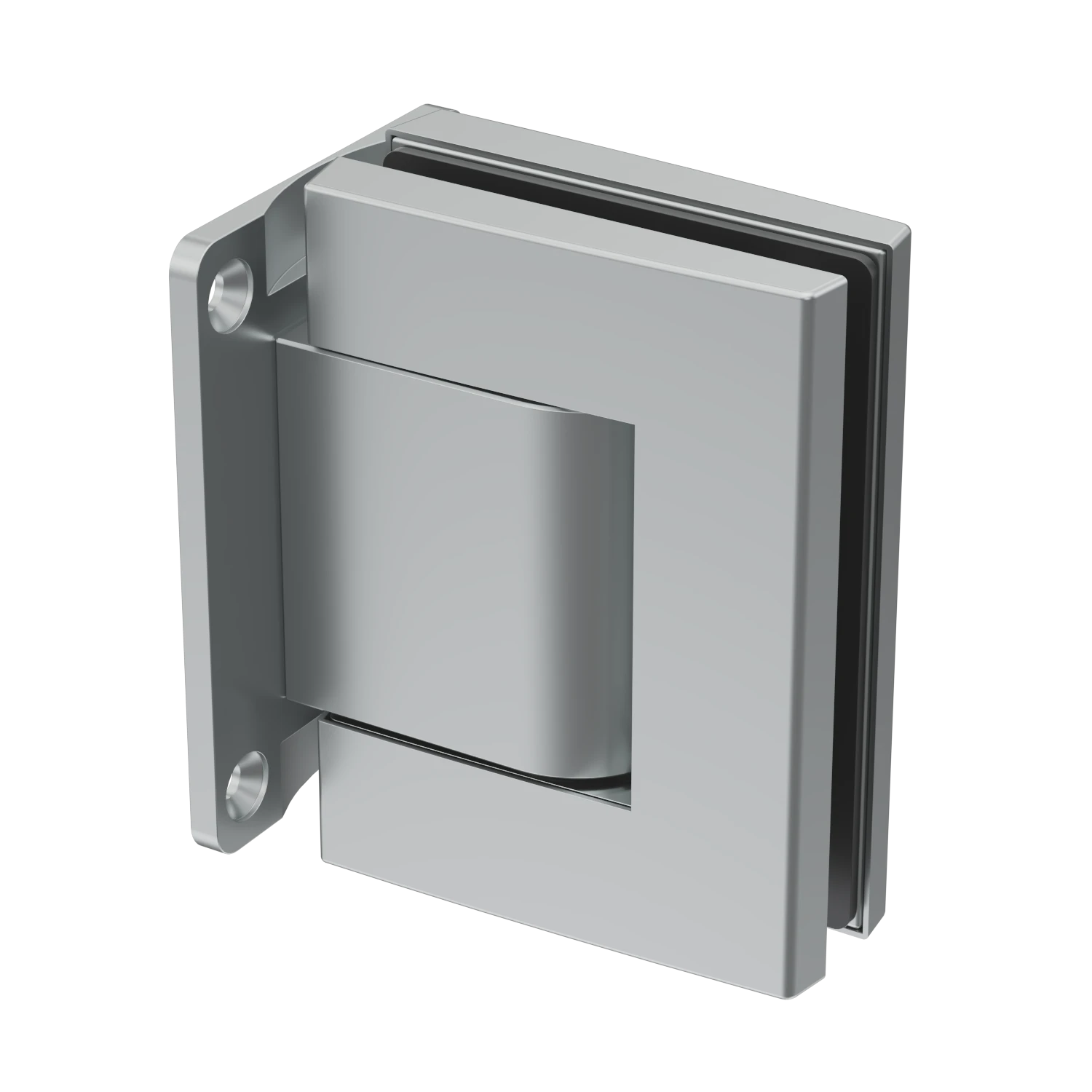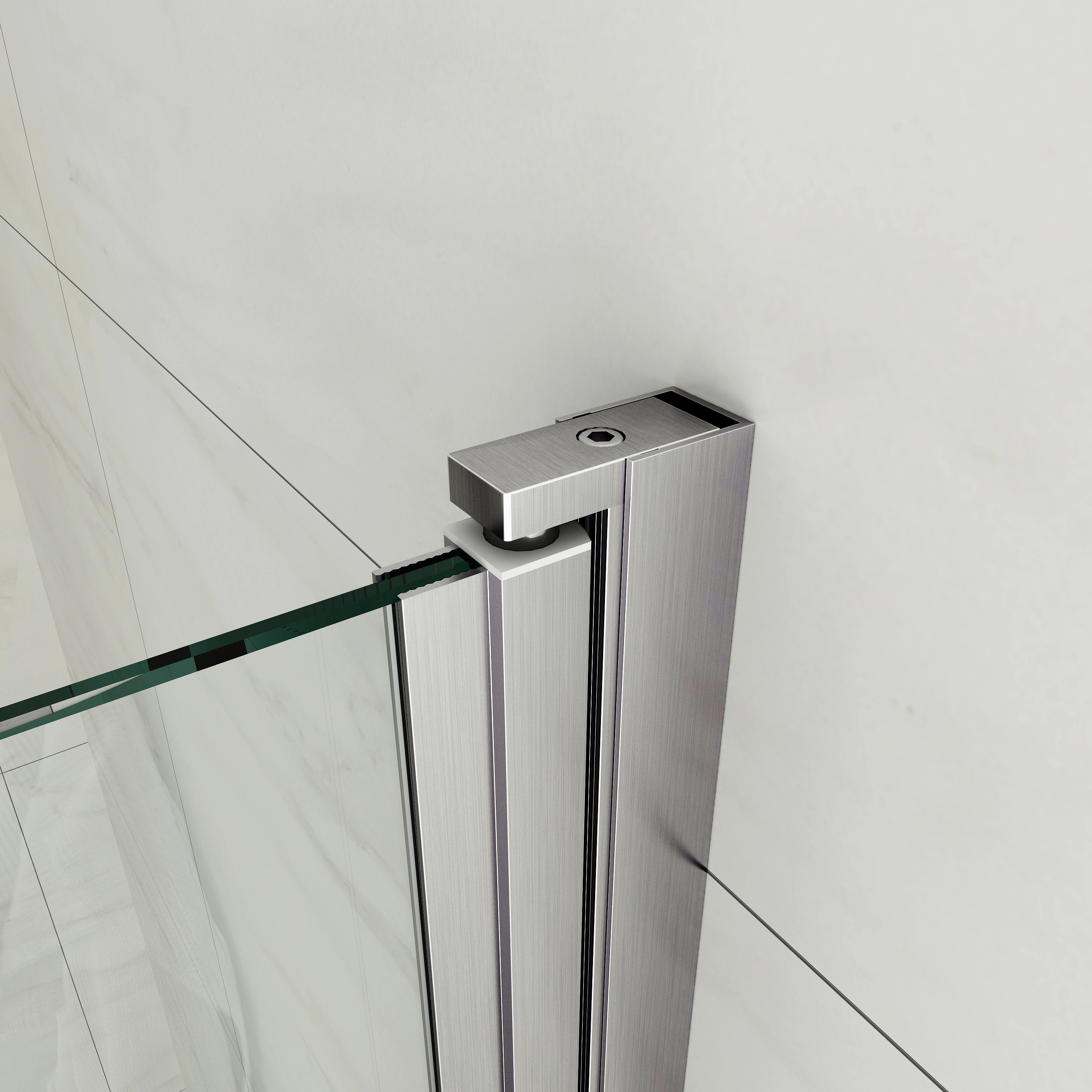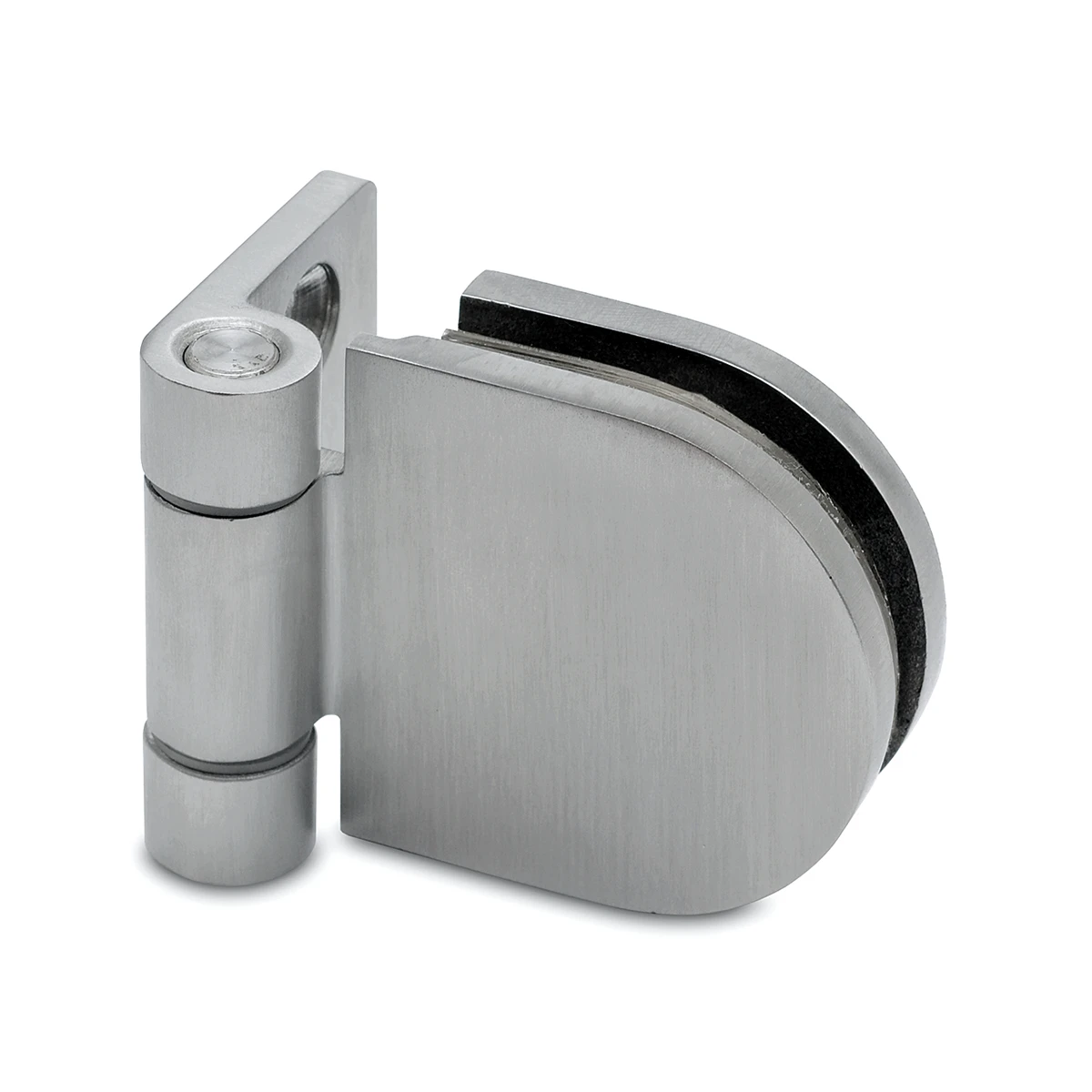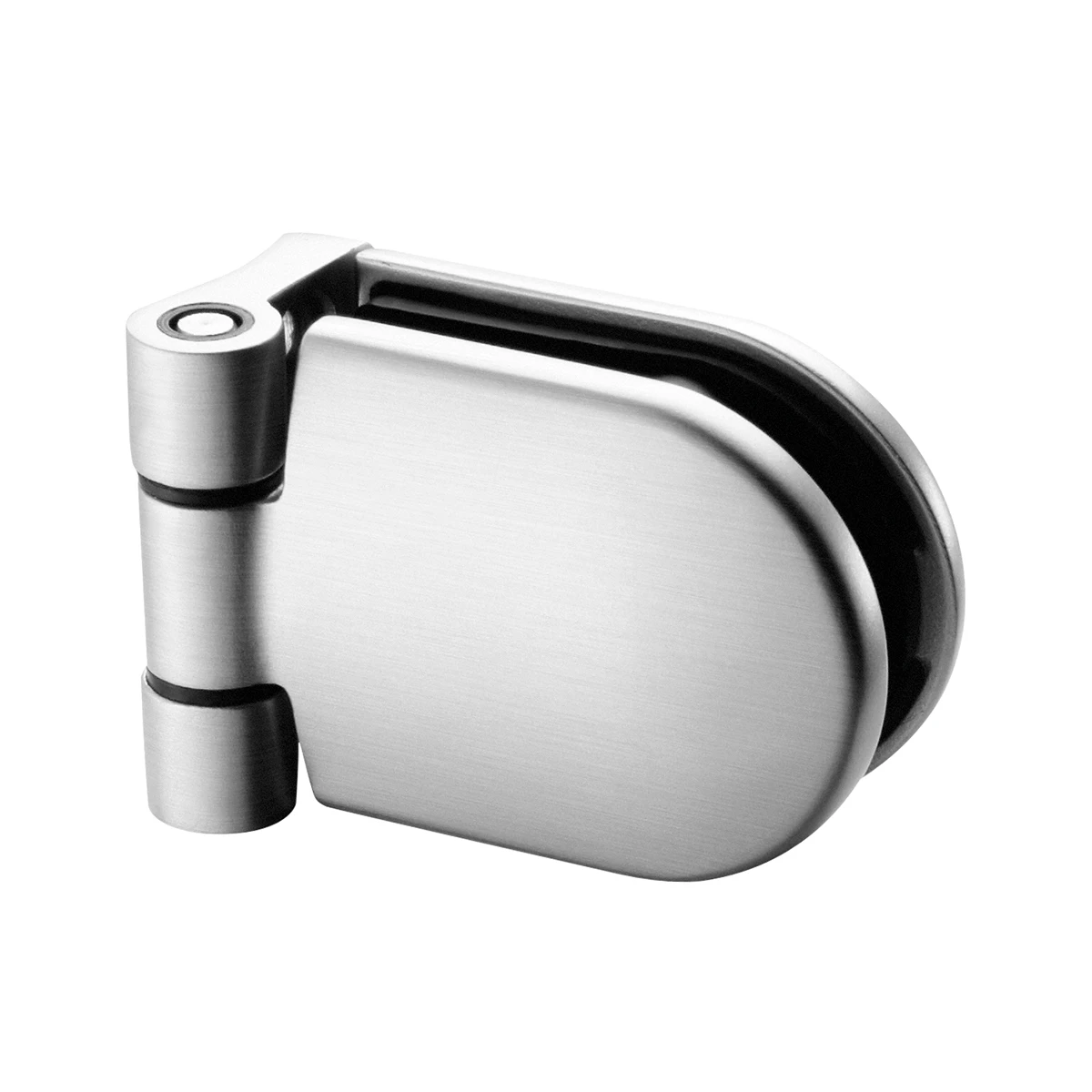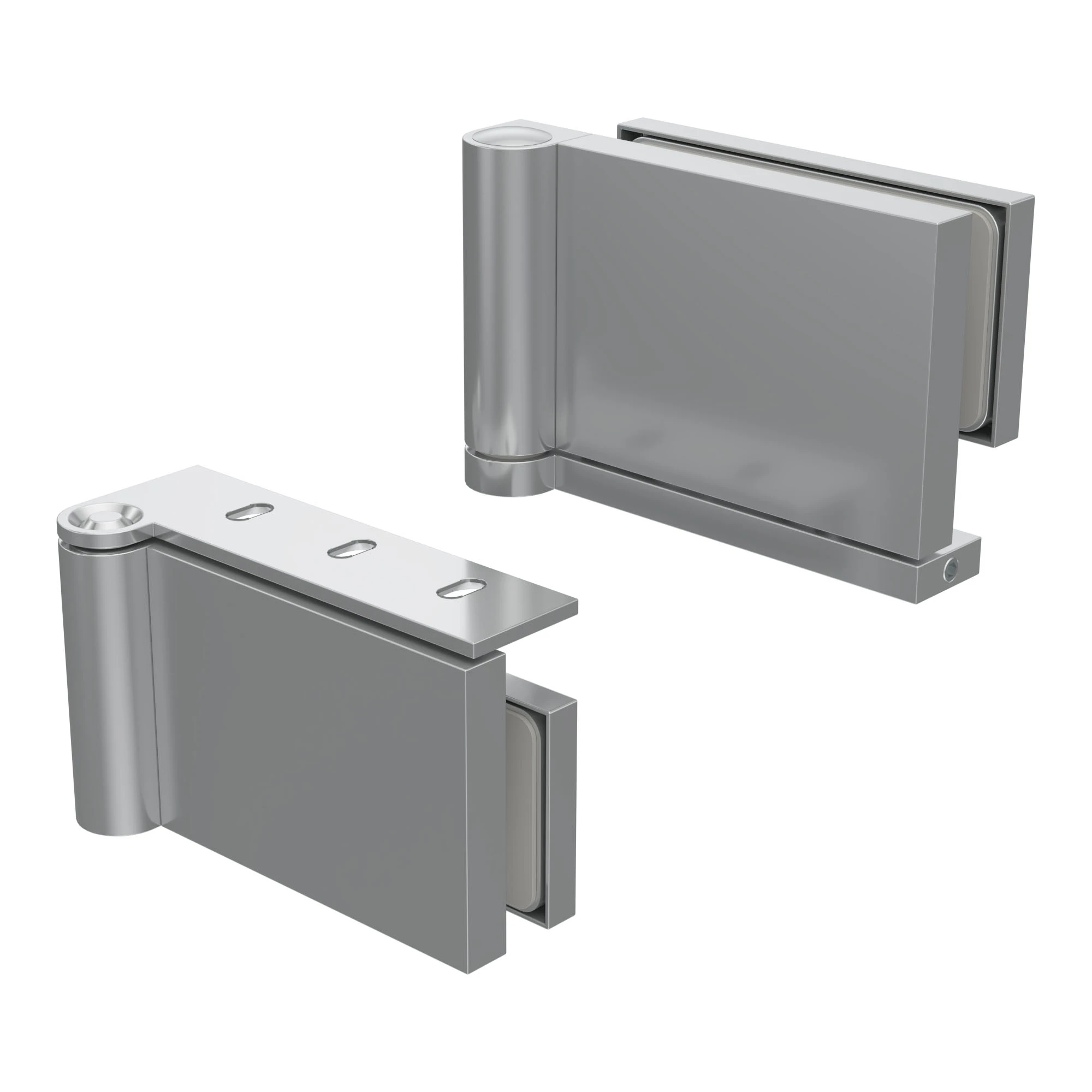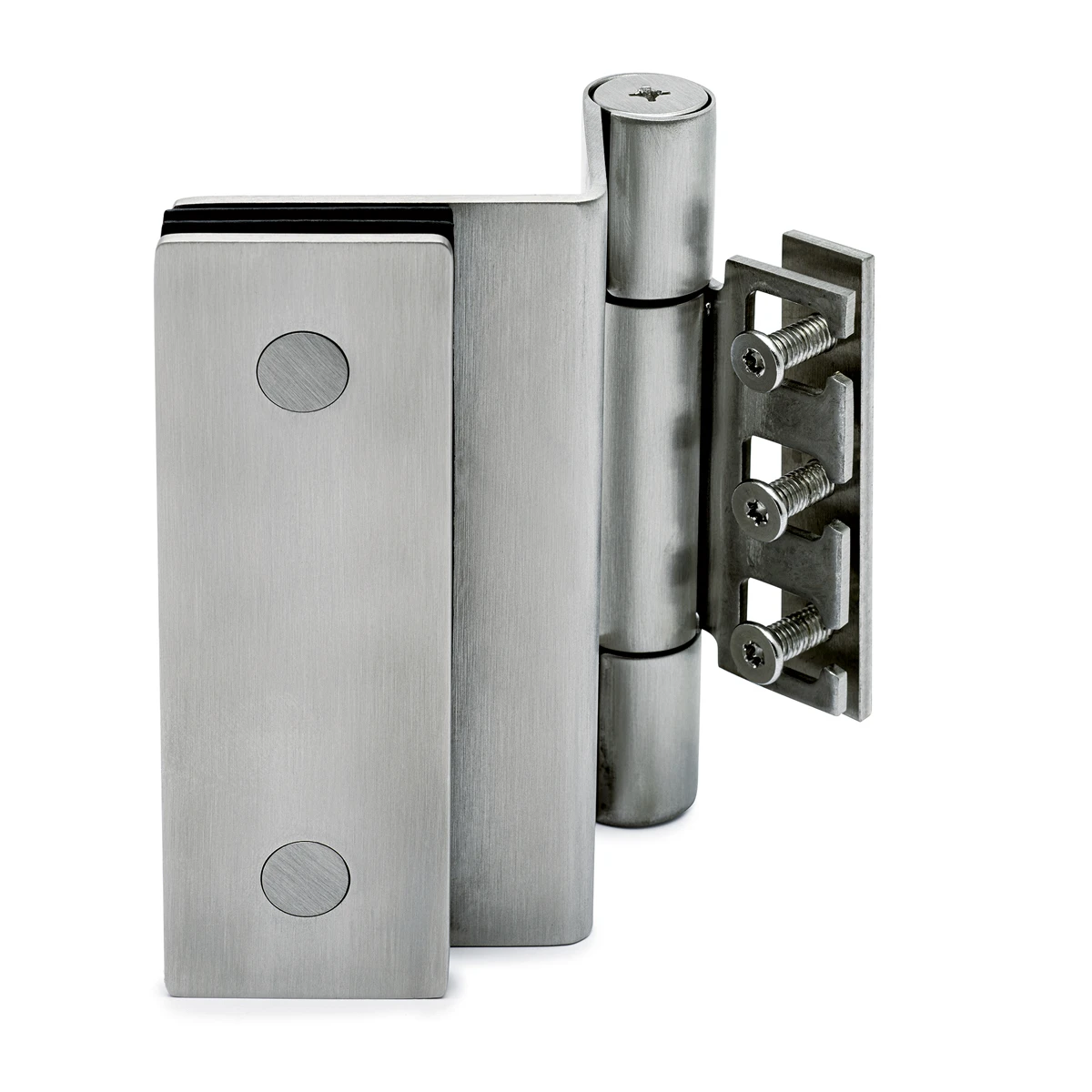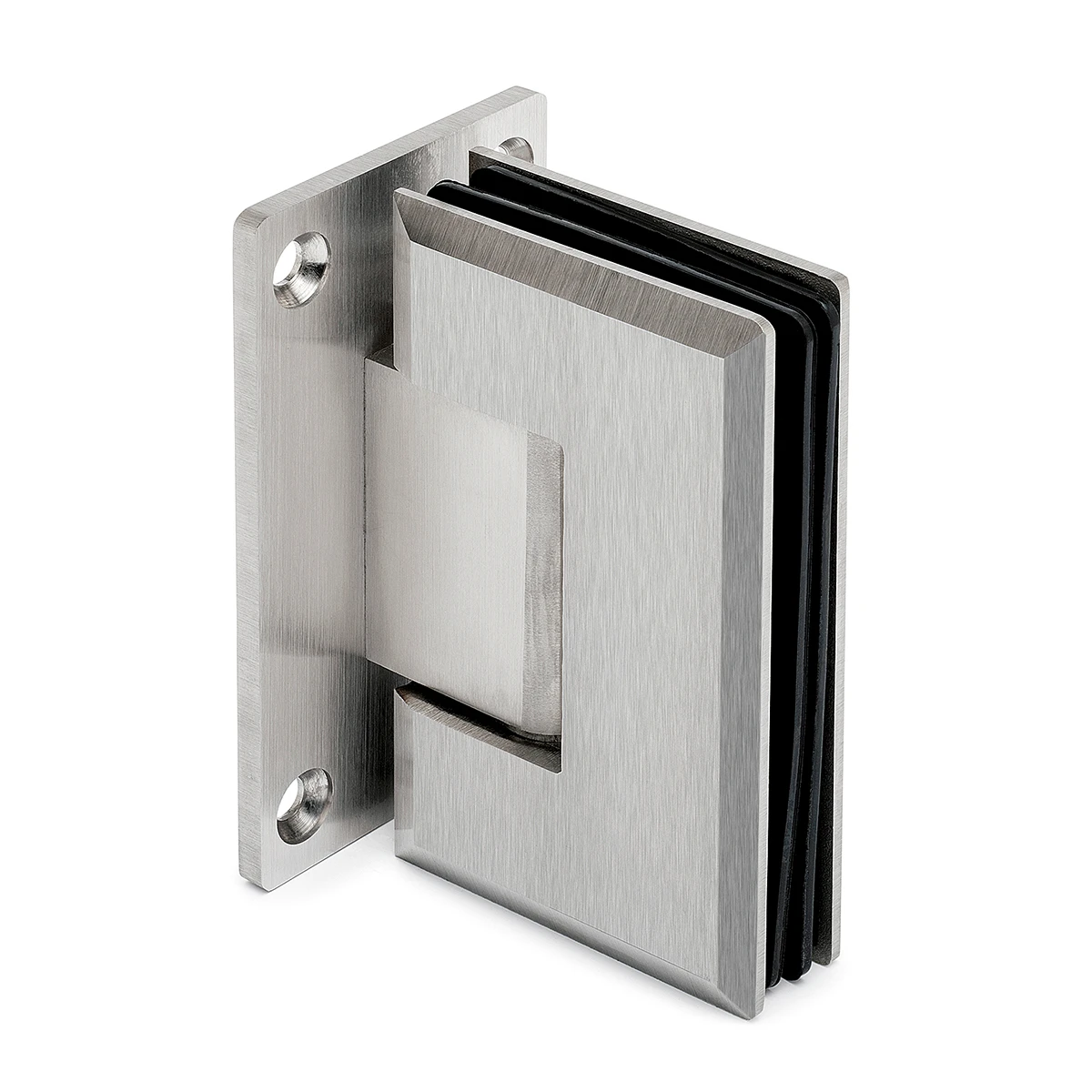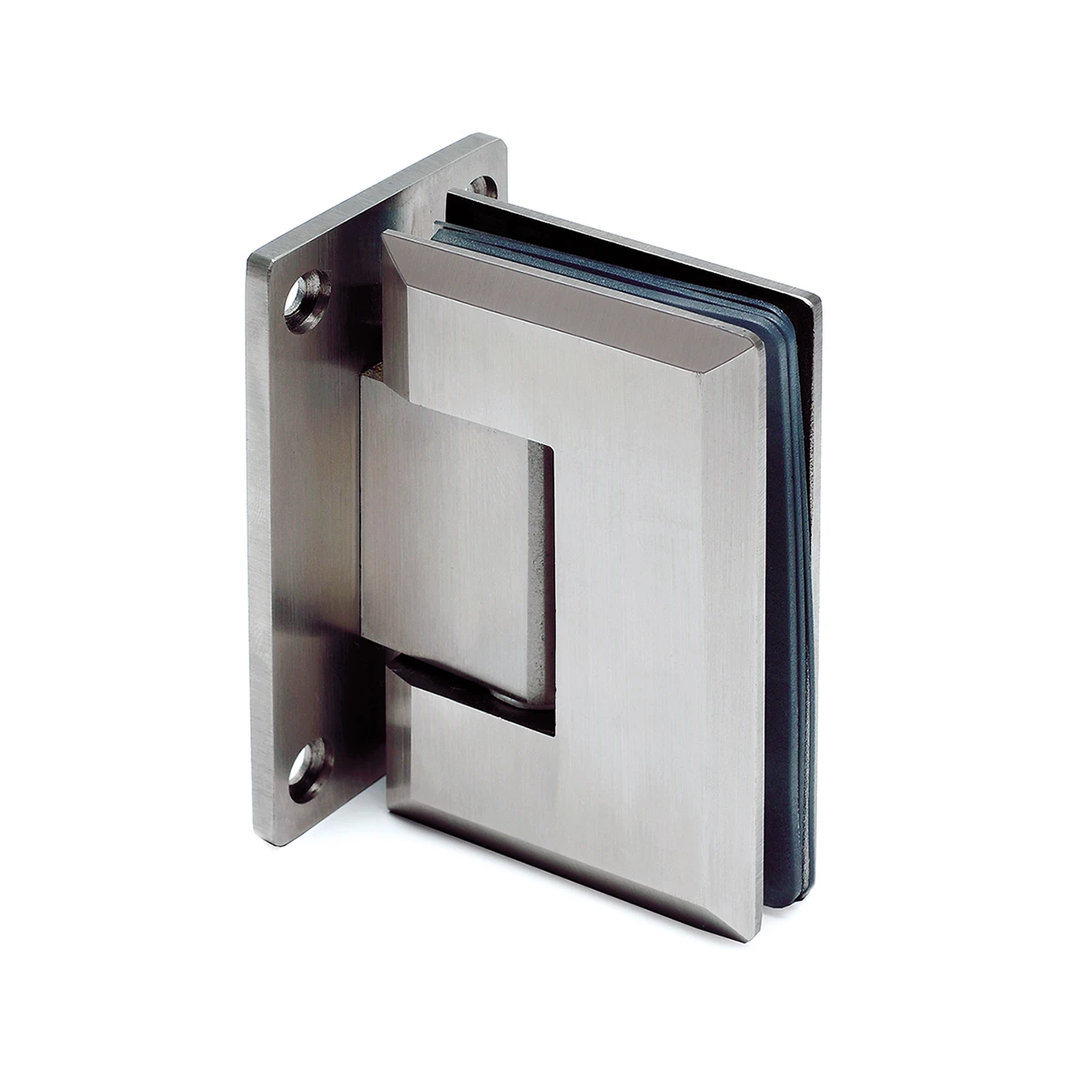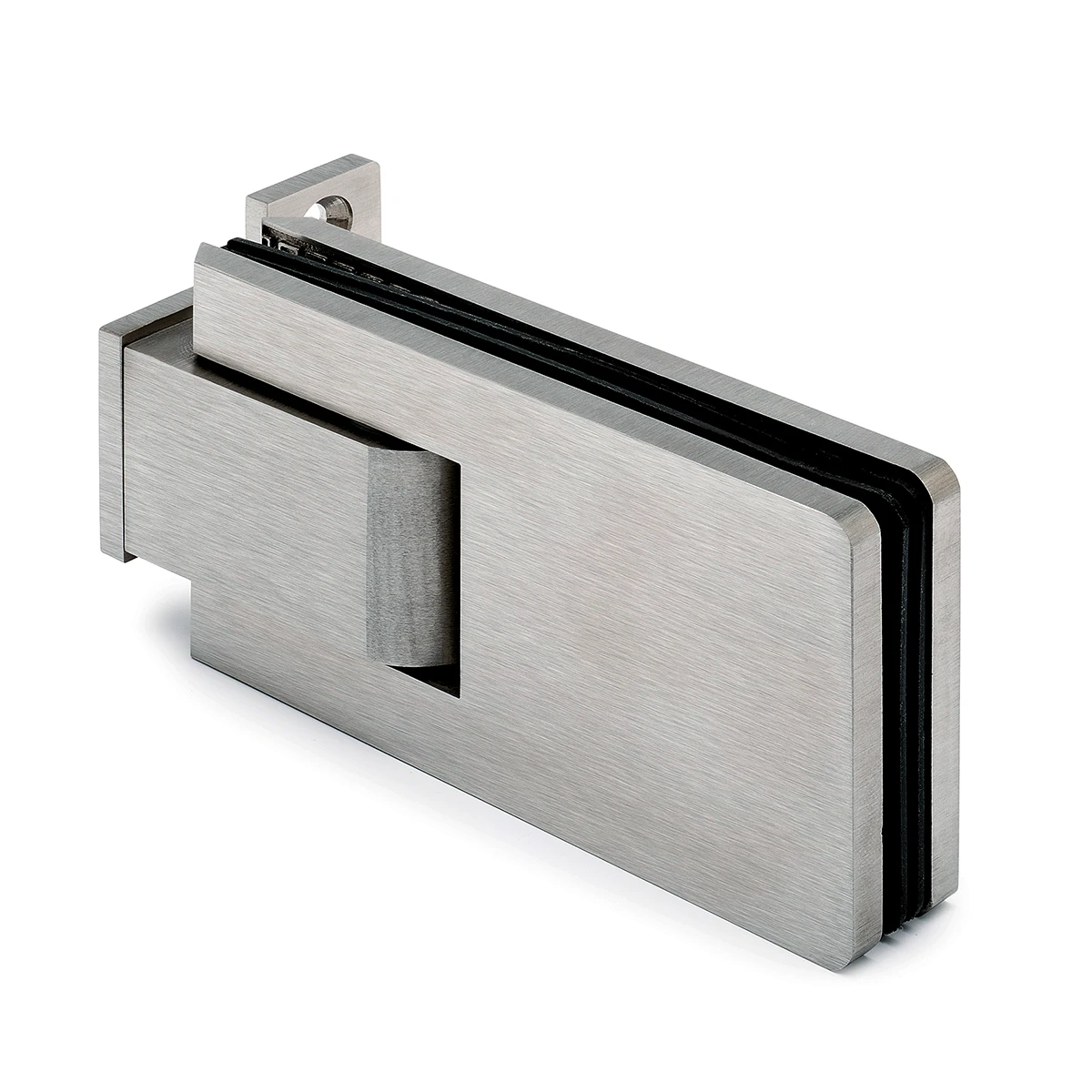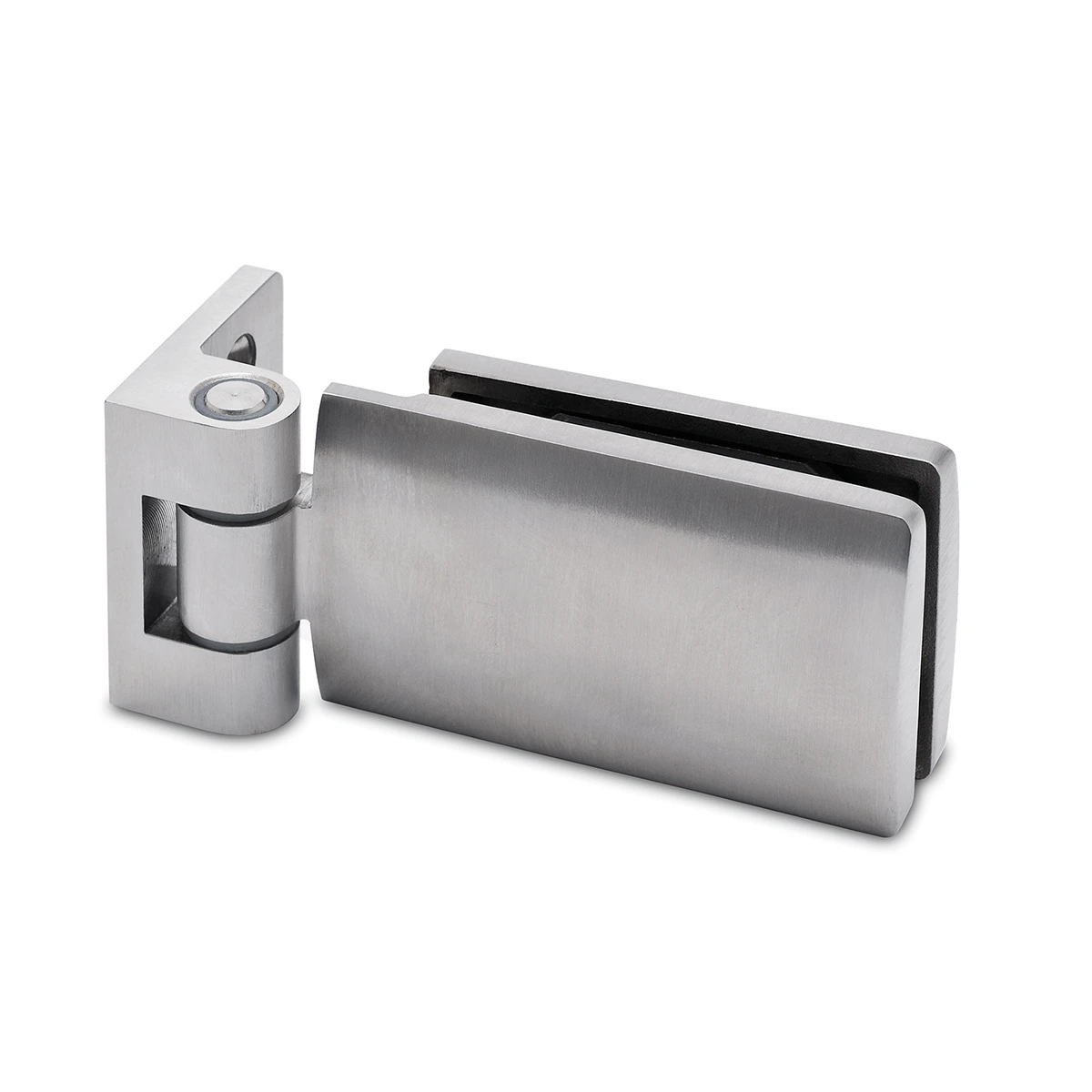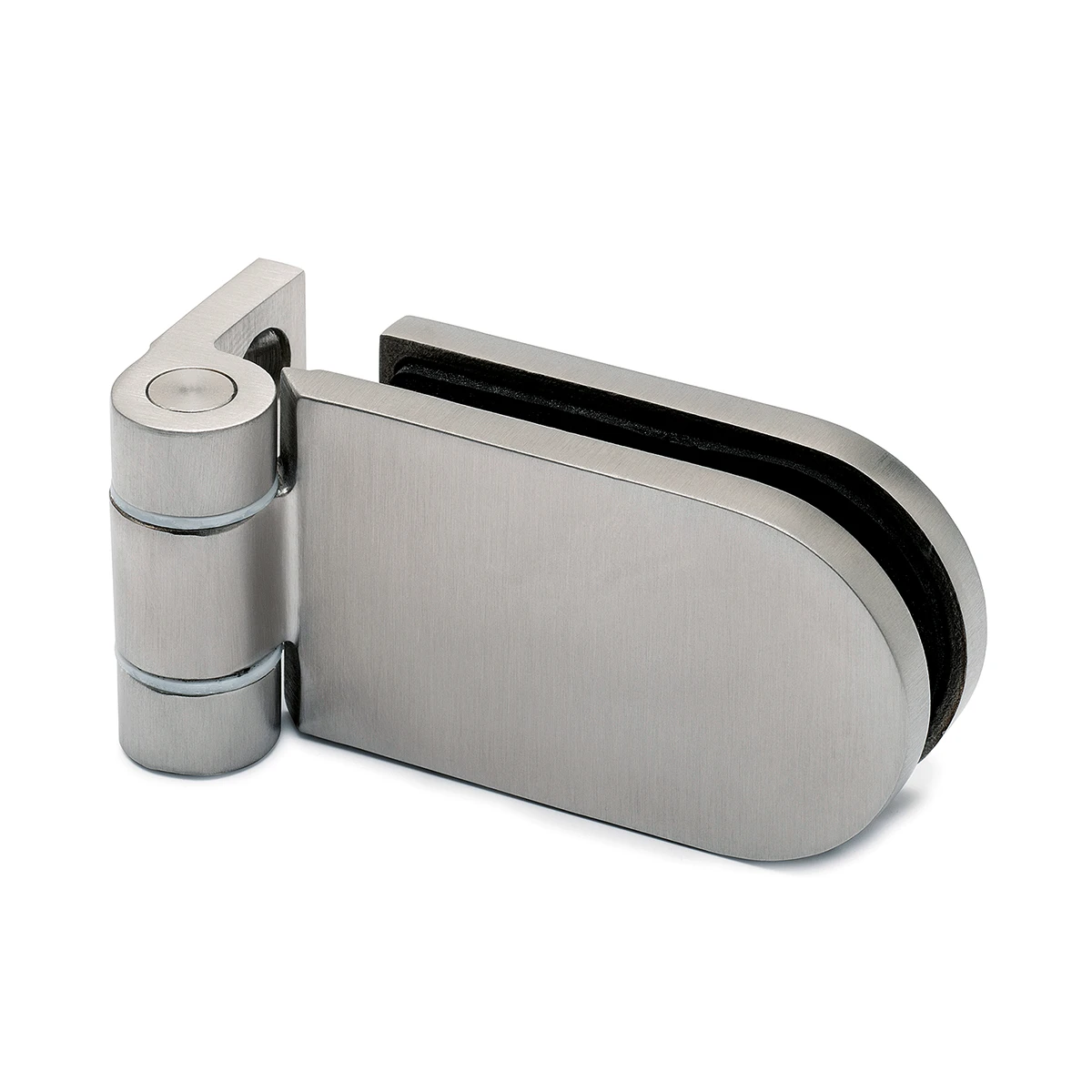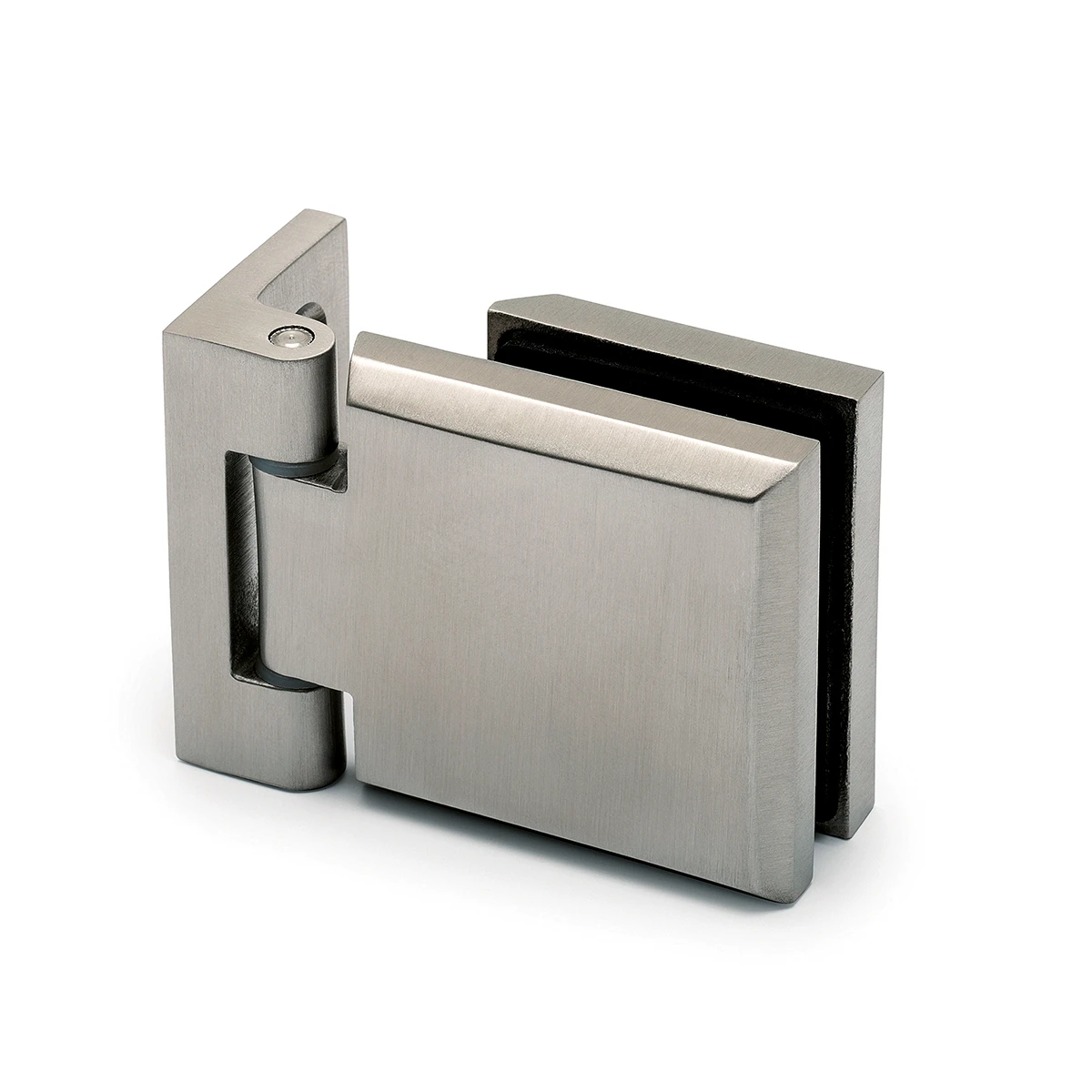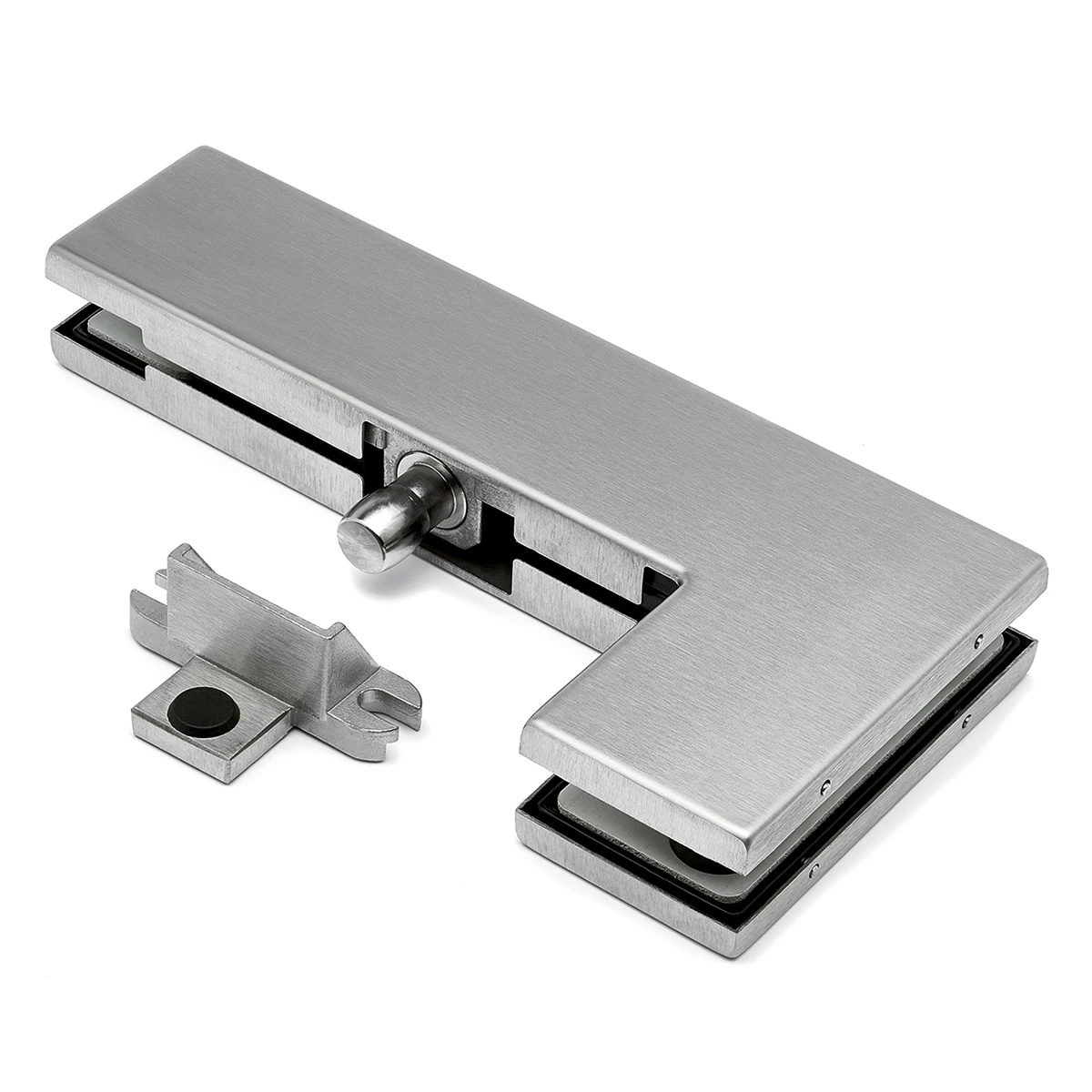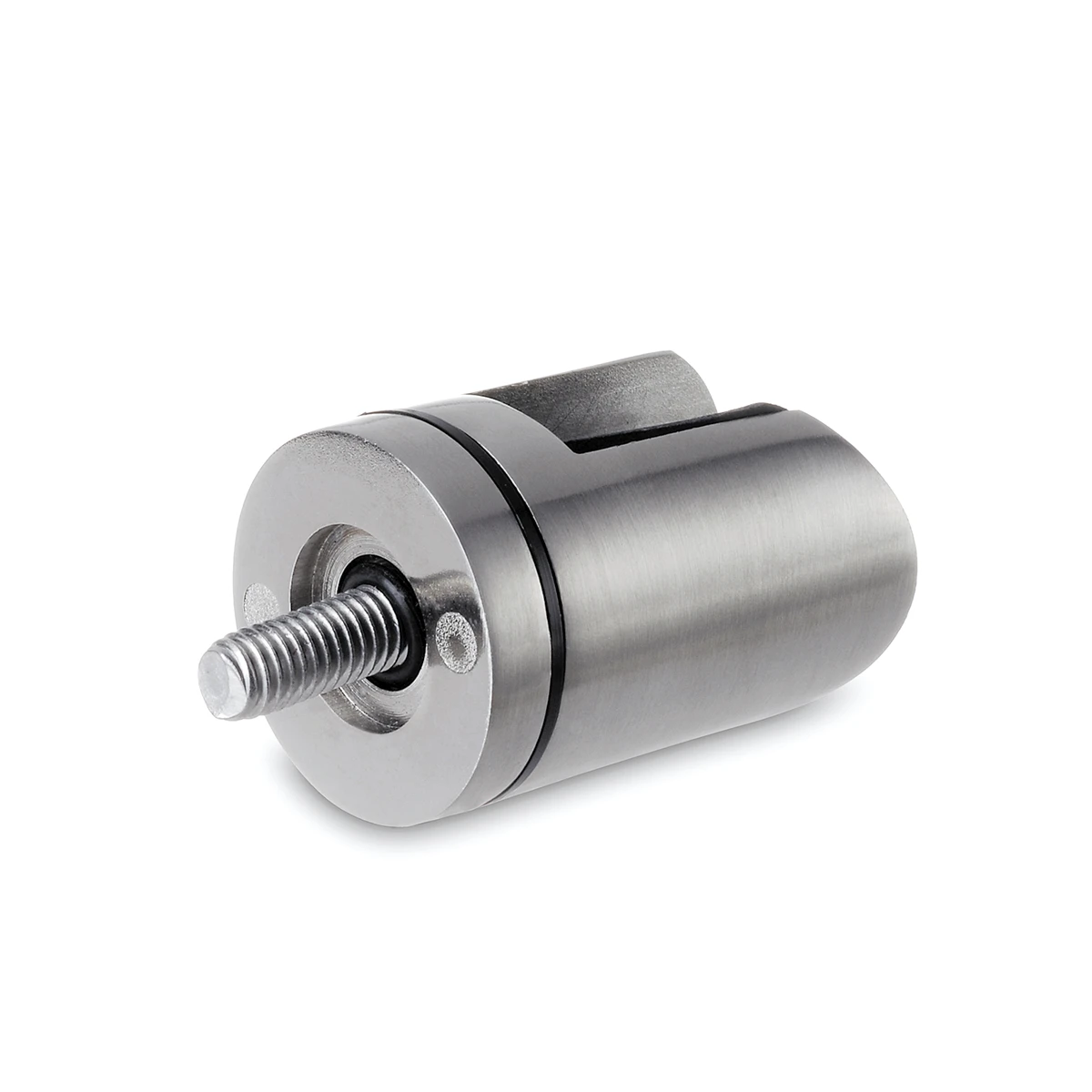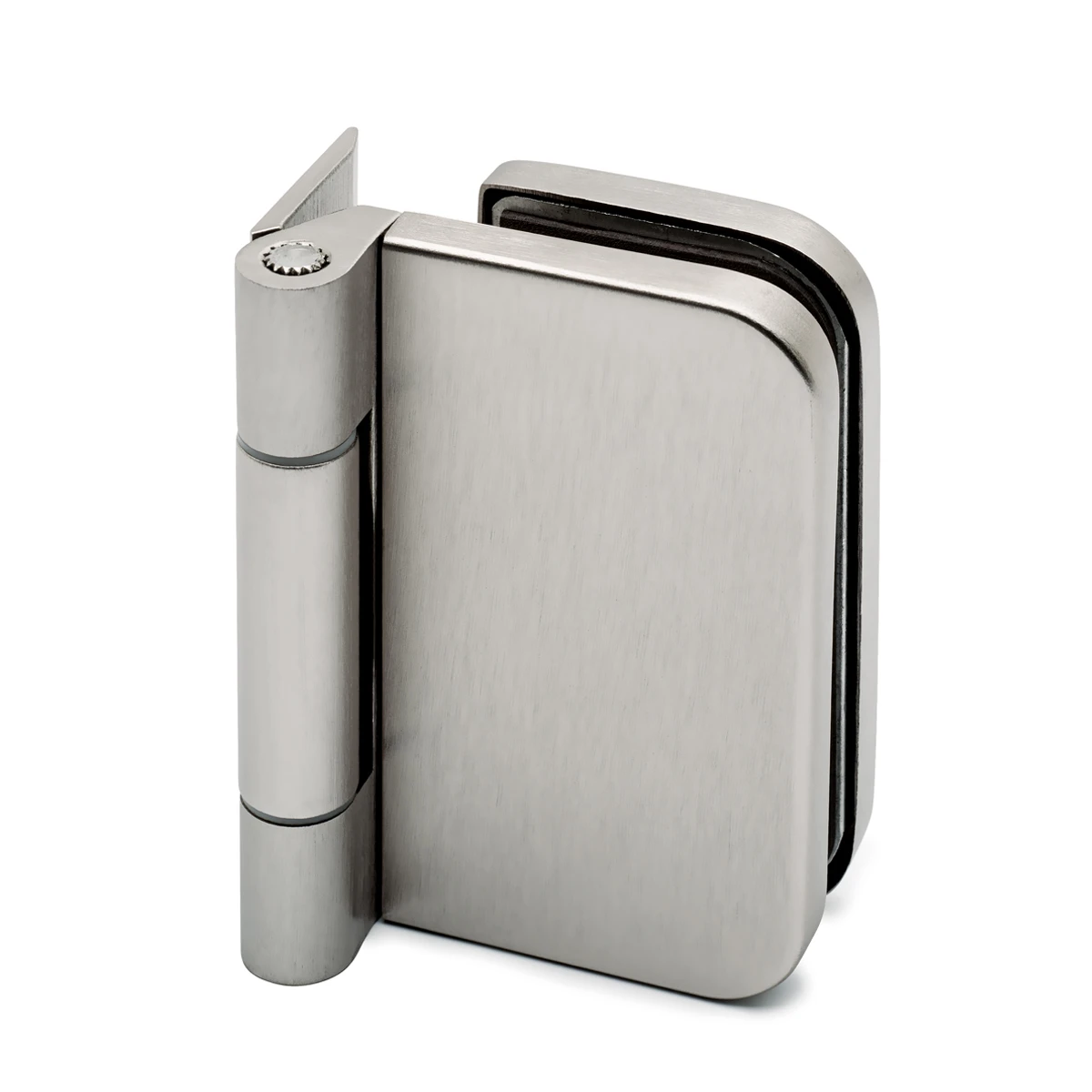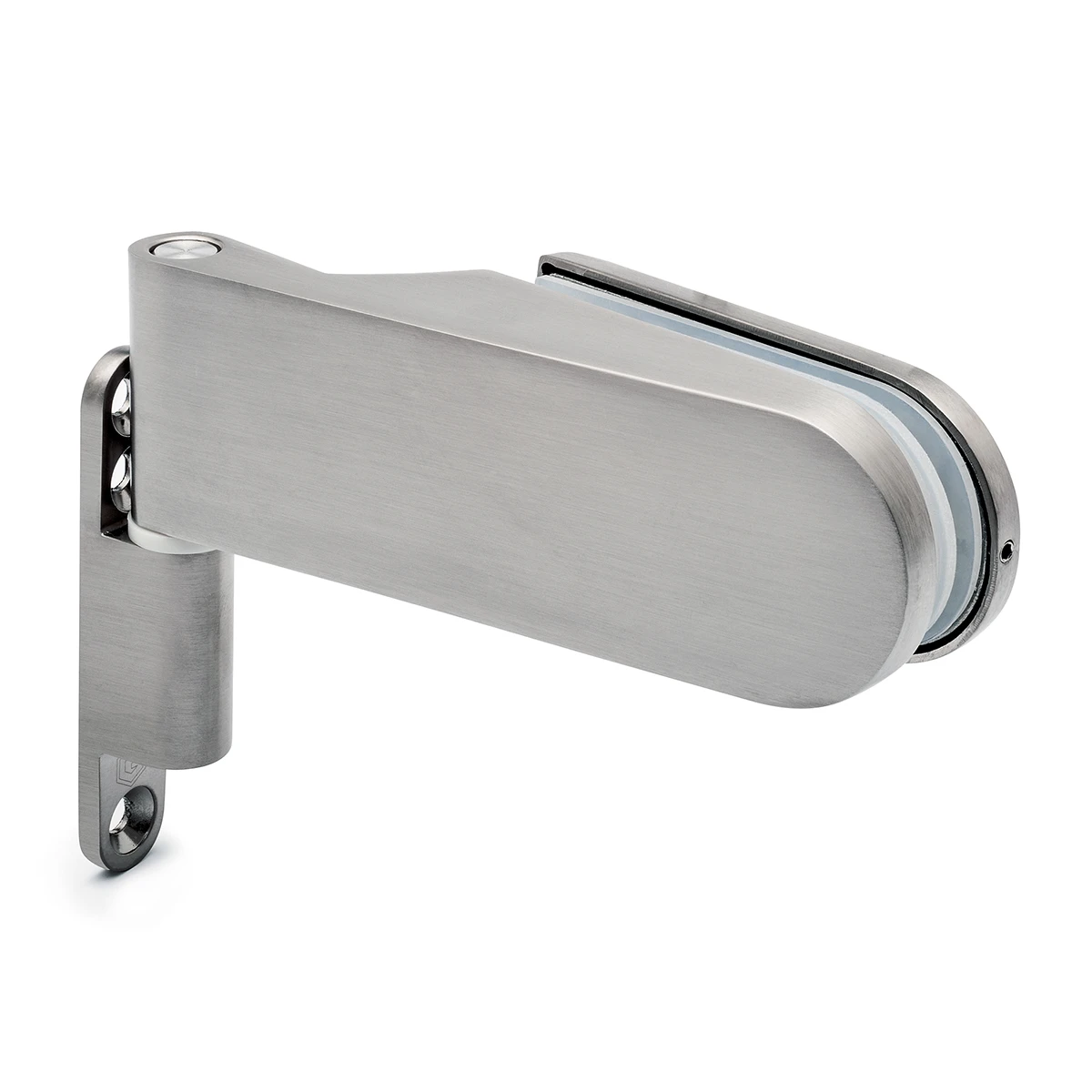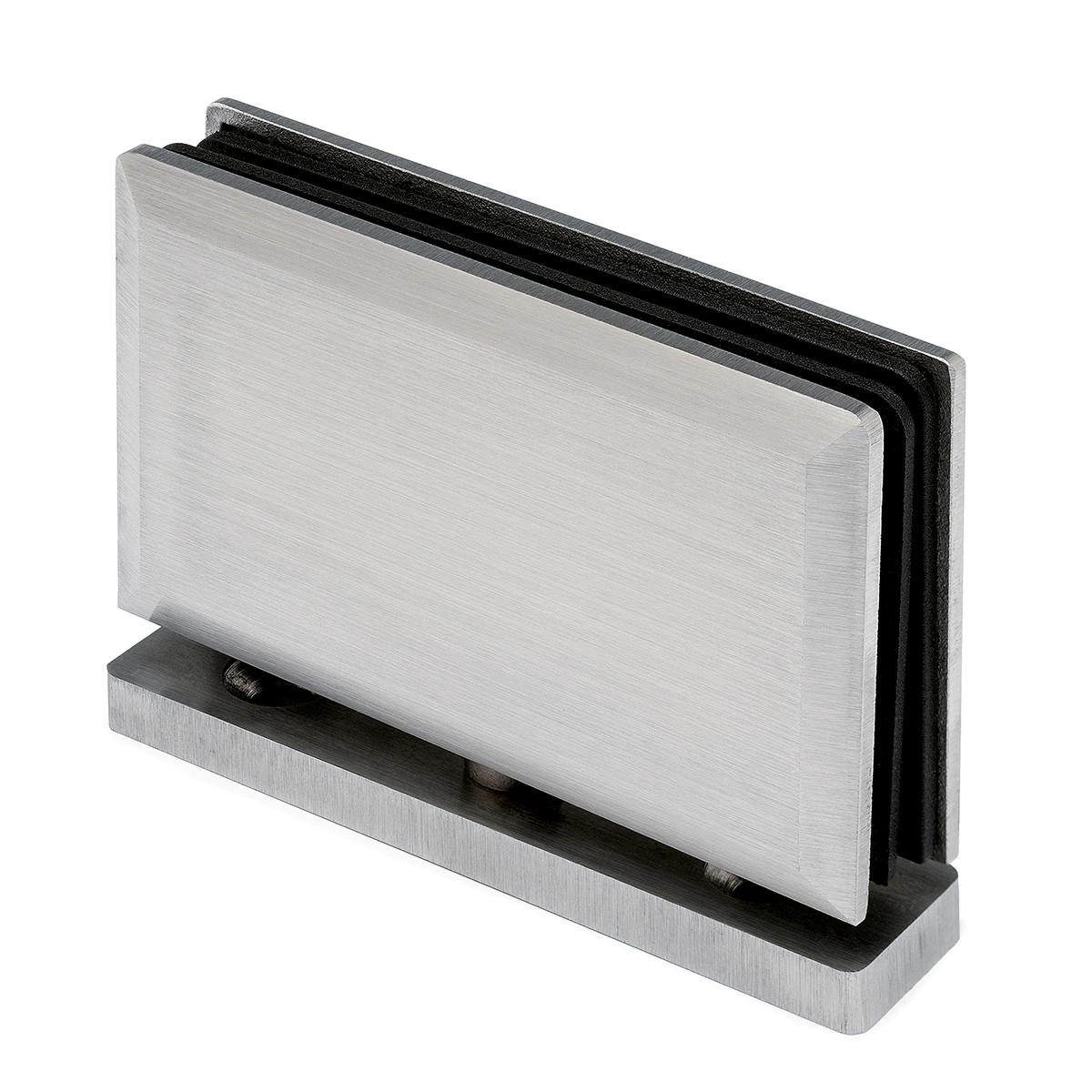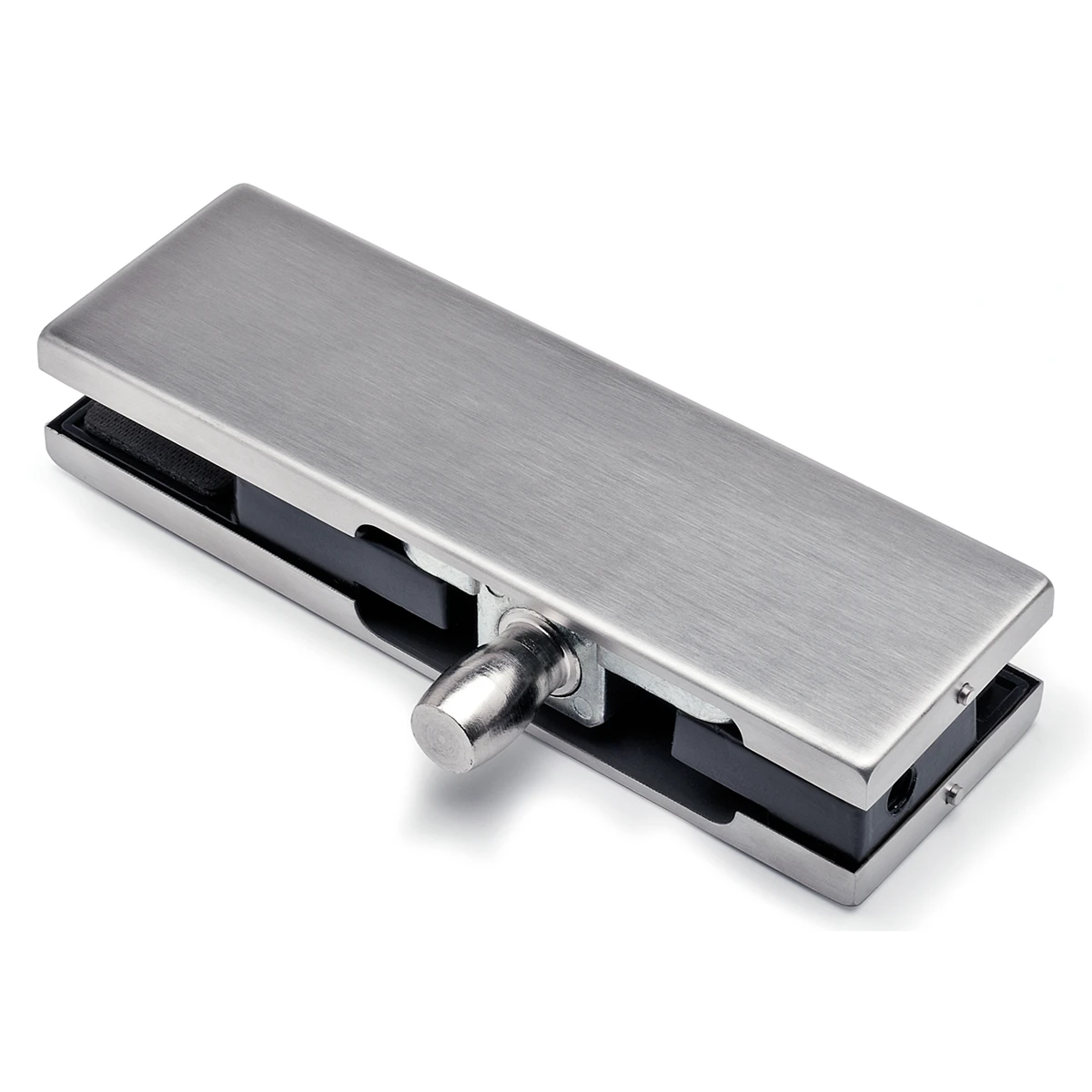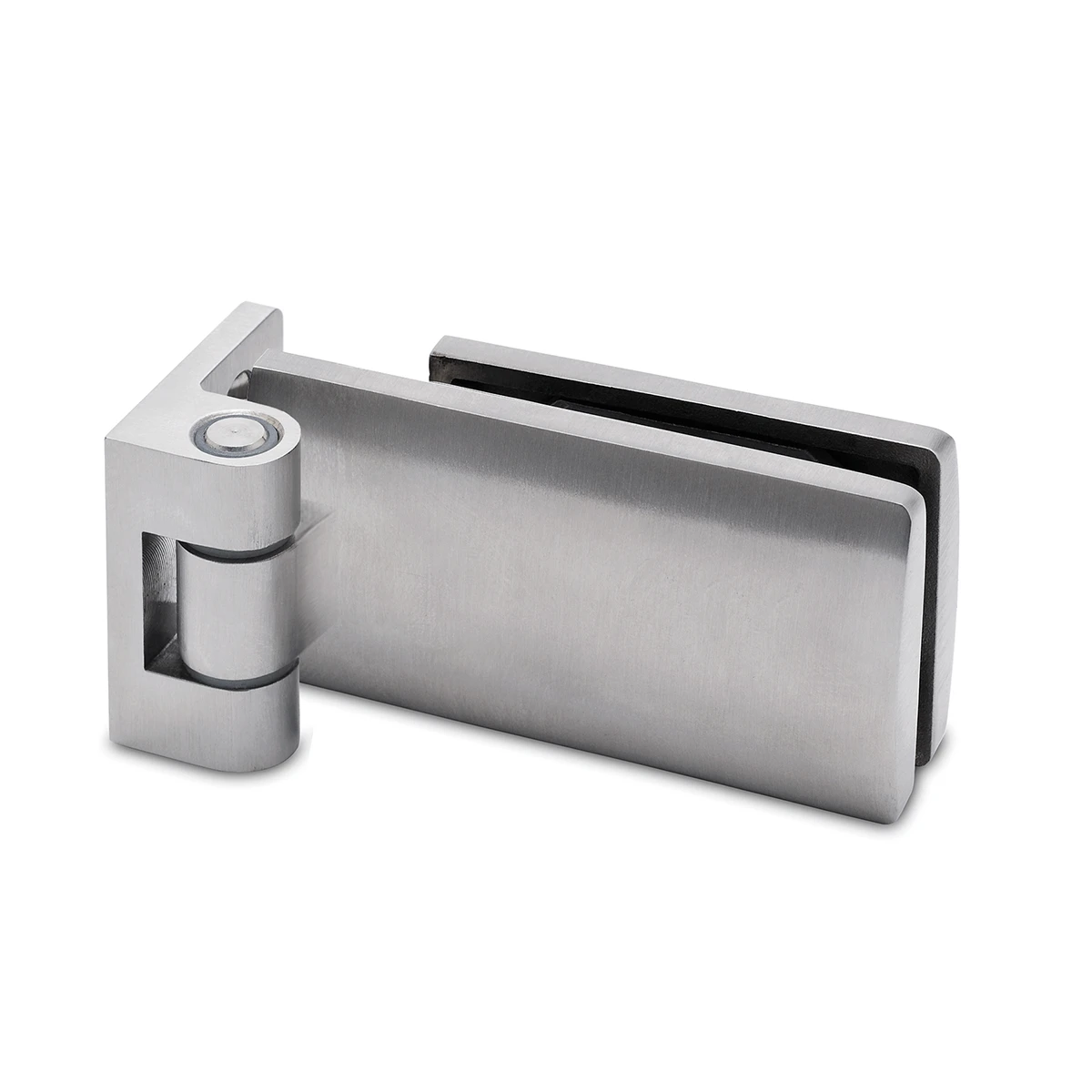Bisagras
Filtro
- Para puertas batientes, montaje en cristal/pared
- Para vidrio de 8 - 10 mm
- Hasta 45 kg de peso de puerta / 800 mm de ancho
- DIN izquierda y DIN derecha
- En acero inoxidable o negro
- Capacidad de carga hasta 90 kg máx.
- Para vidrio de 8 - 12 mm
- Ajustable izquierda / derecha ± 2,5 mm; altura ajustable ± 3 mm
- Material de alta calidad
- Instalación rápida y sencilla
- Acero inoxidable V2A de alta calidad
- Peso máx. de la puerta hasta 70 kg
- para vidrio de 8 - 12,76 mm
- Ajustable para una aplicación precisa
- Diseño en acero inoxidable y negro
- Probado según DIN EN 1154 - 500.000 ciclos de cierre
- Función de cierre suave para un cierre silencioso
- Velocidad de cierre ajustable de forma flexible
- Capacidad de carga de hasta 100 kg
- Para DIN izquierda y DIN derecha
- Cómodo mecanismo de elevación/descenso
- Adecuado para vidrio de 6 mm
- Bloqueo de puerta a 90° en ambos lados
- Nivelación de paredes irregulares
- Versátiles posibilidades de aplicación
- Acero inoxidable de alta calidad
- capacidad de carga máxima de 75 kg
- para vidrio de 8 - 12,76 mm
- Amortiguador hidráulico regulable
- Función de autocierre automático
- Acero inoxidable V2A de alta calidad
- Todo cristal o mural
- Peso máximo de la puerta de 45 kg
- para vidrio de 6 - 10 mm
- Diferentes variantes de diseño
- Acero inoxidable de alta calidad
- Montaje en cristal o tubo
- Peso de puerta máx. 45 kg
- DIN izquierda y DIN derecha
- para vidrio de 6 - 12,76 mm
- Ajuste preciso de 2 vías
- Peso máx. de la puerta hasta 50 kg
- para vidrio de 8 - 12 mm
- Varias superficies
- Dirección de apertura flexible
- Acero inoxidable V2A de alta calidad
- Para vidrio de 8 - 12 mm
- Capacidad de carga de hasta 70 kg
- Ancho máx. de puerta hasta 1200 mm
- Flexible con dos opciones de montaje
- Función de cierre automático a partir de 30
- Función de cierre suave
- Ideal para puertas batientes de cristal
- Función de cierre automático a partir de 30
- Gran capacidad de carga de hasta 40 kg
- Ángulo de apertura 90° en ambas direcciones
- Para vidrio de 8 - 10 mm
- Apertura de 180° para una máxima flexibilidad
- Inclinación en ambos lados 90° cada uno
- Para montaje en cristal y cristal/pared
- Disponible en cuatro variantes de superficie
- Acero inoxidable V2A de alta calidad
- Para vidrio de 8 - 12 mm
- Posición cero ajustable
- Peso máx. de la puerta hasta 50 kg
- Diseños de montaje flexibles
- Para montaje en cristal o pared
- Capacidad de carga máxima de 50 kg
- Adecuado para vidrio de 6 - 10 mm
- Ancho de puerta hasta 1200 mm
- Diferentes variantes de diseño
- Para vidrio de 6 - 10 mm
- Máx. Peso de la puerta de 45 kg
- Apertura DIN izquierda o DIN derecha
- Varias opciones de diseño
- Para montaje en cristal o pared
- Capacidad de carga de hasta 45 kg
- Adecuado para vidrio de 6 - 10 mm
- Anchuras de puerta de hasta 900 mm
- Diferentes variantes de diseño
- Para espesores de vidrio de 10 - 12 mm
- Diseño en acero inoxidable o negro
- Ideal para puertas batientes
- Capacidad de carga máxima de 100 kg
- Ancho de puerta hasta 1100 mm
- Adaptador giratorio 360
- Cierre seguro con protección de goma
- Para rosca M6
- Compatible con tubos planos y redondos
- Para montaje en pared de cristal
- Máx. Capacidad de carga de 50 kg
- Para vidrio de 6 - 10 mm
- Ancho de puerta hasta 1200 mm
- Acero inoxidable de alta calidad, diseño cromado y negro
- Elegante tapa para un aspecto limpio
- para vidrio de 8 - 10 mm
- Capacidad de carga máxima de 50 kg
- Acero inoxidable de alta calidad, diseño cromado o negro
- Apertura DIN izquierda y DIN derecha
- Para vidrio de 8 - 10 mm
- Capacidad de carga máxima de 50 kg
- Diseño en acero inoxidable o cromado
- Para puertas de simple efecto
- Adecuado para DIN izquierda / derecha
- Para vidrio de 8 - 10 mm
- Posibilidad de montaje en techo o suelo
- Capacidad de carga máxima de 40 kg
- Diseño en acero inoxidable, cromo o negro
- Para espesores de vidrio de 10-12 mm
- Capacidad de carga máxima de 100 kg
- Acero inoxidable y diseño en negro
- Ancho de puerta hasta 1100 mm
- Acero inoxidable V2A de alta calidad
- Para vidrio de 8 - 10 mm
- Varias superficies
- Máx. Peso de la puerta hasta 50 kg
- Apertura DIN izquierda y DIN derecha
HINGES FOR GLASS DOORS
Hinges are mechanical devices that connect two fixed objects, such as a door and a door frame. They allow the door to rotate around an axis to be opened or closed. Hinges are typically made of metal and consist of two plates connected by a pin or an axis. There are different types of hinges, such as hinges with concealed, surface-mount, or welded plates.
What types of door hinges are there?
There are various types of door hinges that can vary in their design, materials, and applications. Here are some common types of door hinges:
- Butt hinges: These are the most commonly used hinges for doors. They consist of two plates connected by a pin. Butt hinges are available in different sizes and materials and are suitable for a variety of applications.
- Piano or continuous hinges: These long, narrow hinges extend along the entire length of the door and allow for even weight distribution. They are often used on cabinet doors and lightweight partitions.
- Concealed hinges: These hinges are invisible when the door is closed as they are recessed into the door frame and edge. They are ideal for modern, minimalist designs, providing a clean, seamless look.
- T-hinges: These hinges have a "T" shape and are frequently used on gates and cabinet doors. They are sturdy and offer good stability.
- Overlay hinges: These hinges are primarily used on cabinet doors and are inset into the door, leaving only the pivot point visible. They allow for easy installation and adjustment of the door.
- Butterfly or bi-fold hinges: These decorative hinges have a shape reminiscent of butterfly wings and are commonly used on lightweight doors and cabinets.
- Pivot hinges: These hinges allow the door to rotate around a fixed point in the floor and header of the door frame. They are often used on heavy doors and glass doors.
- Soss hinges: Similar to concealed hinges, Soss hinges are invisible when the door is closed. Their design allows for nearly flush mounting of the door and frame.
There are many more types of door hinges, but these are some of the most common ones. Choosing the right hinges depends on factors such as door size, weight, material, and desired aesthetics.
Applications of Door Hinges
Door hinges are mechanical devices that enable a rotating connection between two fixed objects, such as doors and door frames. They are available in various sizes, materials, and designs to meet different requirements. Here are some applications of door hinges:
- Interior doors: Door hinges are used in residential and commercial buildings to attach interior doors to the door frames. They enable the opening and closing of doors and contribute to the stability and security of the doors.
- Exterior doors: Door hinges are also important for exterior doors as they provide durability against weather conditions and increased security. They are typically made of robust materials such as stainless steel or brass to prevent rust and corrosion.
- Cabinet doors: Door hinges are employed in kitchen, bathroom, and cabinet doors to provide easy access to the contents of the cabinet. They are available in concealed and non-concealed designs and can be customized to fit the specific cabinet door.
- Furniture doors: Door hinges are also used in furniture pieces such as cabinets, display cases, and other storage furniture. They enable the opening and closing of furniture doors and contribute to the functionality and aesthetics of the furniture piece.
- Vehicle doors: Door hinges are utilized in various vehicles such as cars, trucks, buses, and RVs. They enable the opening and closing of vehicle doors while providing security and stability.
- Fire doors: Door hinges for fire doors are designed to withstand high temperatures and restrict the spread of fire and smoke in case of a fire. These hinges must comply with the relevant fire safety regulations.
- Heavy-duty doors: In industrial and commercial environments, heavy-duty door hinges are often used to secure doors that need to withstand increased load and stress.
- Special applications: Door hinges are also employed in special applications such as refrigerator doors, ship doors, aircraft doors, and other unique situations where a rotating connection is required.
Overall, door hinges are an essential component for a wide range of applications where doors or movable parts need to be attached and moved.
What should I consider when choosing hinges?
When selecting hinges, you should consider the following factors:
- Material: Hinges are available in various materials such as brass, stainless steel, zinc, steel, and aluminum. Choose the material according to the application and the environment in which the hinge will be used. For example, stainless steel hinges are well-suited for outdoor use as they are corrosion-resistant.
- Size and shape: Hinges come in different sizes and shapes. Ensure that the hinge fits the size and weight of the door or furniture piece it will be attached to. Too small hinges may not bear the load and could break.
- Load capacity: The load capacity of a hinge is an important factor to consider. Make sure the chosen hinge can support the weight of the door or furniture piece.
- Mounting type: There are different mounting types for hinges, such as surface-mounted, mortise, or weld-on. Choose the mounting type that best suits your application and is the easiest to perform.
- Opening angle: The opening angle of a hinge indicates how far the door or furniture piece can be opened. Ensure that the opening angle is sufficient for your application.
- Features: Some hinges offer additional features, such as integrated damping that enables quiet and smooth door closing. Consider whether such features are beneficial for your application.
- Aesthetics: The appearance of the hinges should match the style of the door or furniture piece. You can choose from various finishes, colors, and shapes.
- Price: Consider the price-performance ratio when selecting hinges and ensure that the quality justifies the price.
- Manufacturer: Choose hinges from reputable manufacturers to ensure that you receive a high-quality product.
By considering these factors, you can select the right hinge for your application and ensure a durable and functional solution.















































